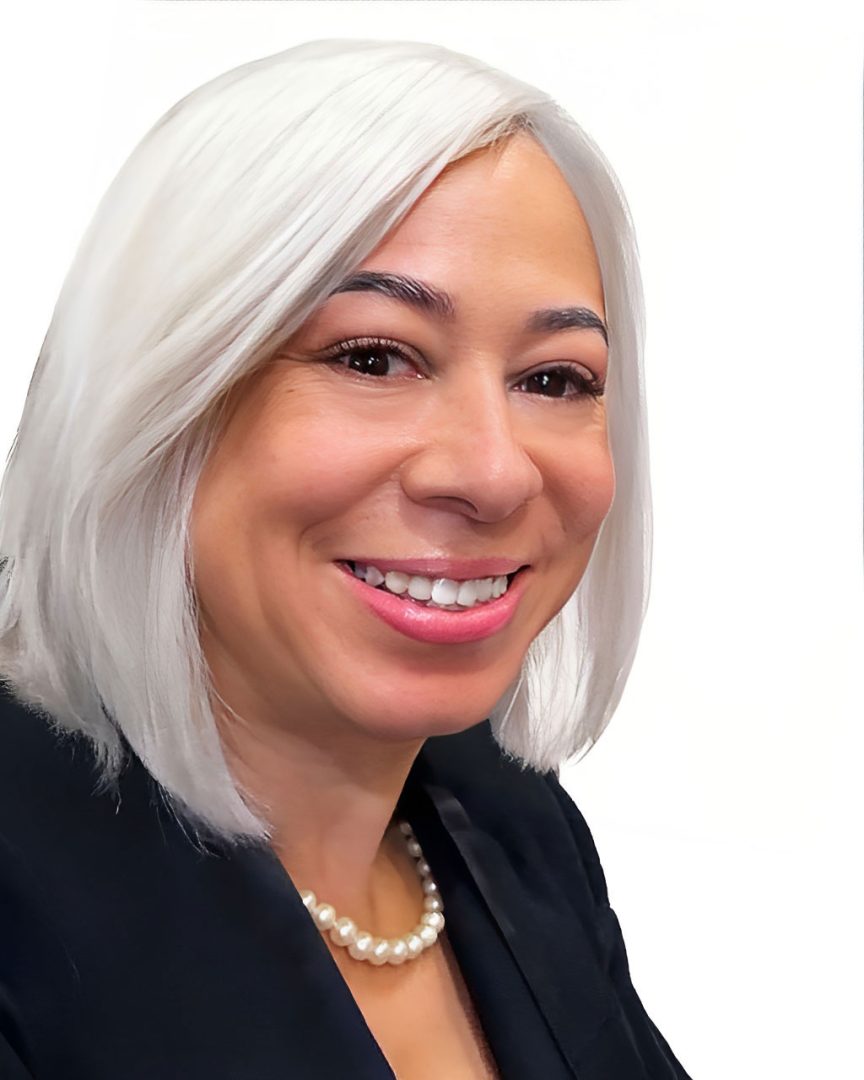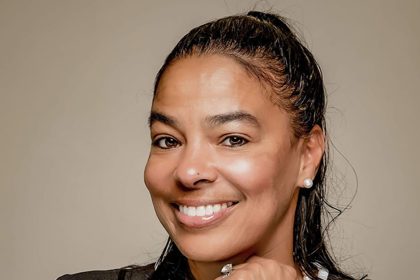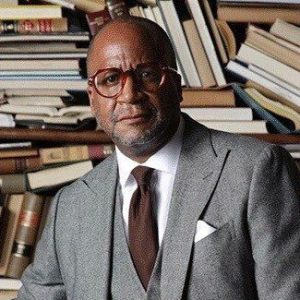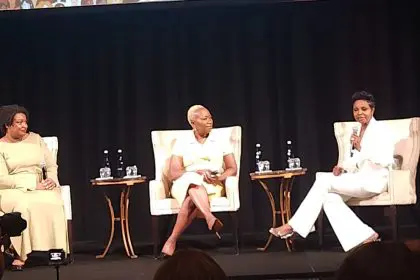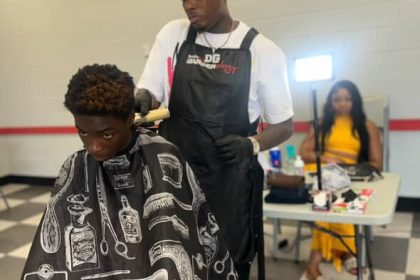In a strategic move that’s redefining community health outreach, Minou Jones, CPS-M, ICRC, has transformed neighborhood barbershops and beauty salons into frontline wellness centers through her flagship program, “Tight 4 Life.” As Founder and CEO of Making It Count Community Development Corporation, Jones has deployed wellness ambassadors across 10 locations in four Detroit-area cities, where trusted barbers and beauticians now do more than style hair — they’re saving lives by connecting clients to vital health services.
The impact of this innovative approach is already measurable. In just one month, one of the program’s barber ambassadors – a former smoker and cancer survivor himself – referred 50 clients to cessation services. It’s part of Jones’s larger mission to combat health inequities, including an ambitious campaign to ban menthol cigarettes, which claim 45,000 Black lives annually. With more than two decades of public health experience and a recent $70K tech/AI grant, Jones is proving that effective healthcare delivery doesn’t always require a doctor’s office — sometimes it just needs a familiar face in a familiar place.
Every nonprofit leader possesses unique abilities to transform communities and mobilize resources for change. What are your distinct leadership powers, and how do they manifest in your organization’s impact? How has your approach to community service evolved to address changing societal needs?
I lead with purpose and passion. I started Making It Count to make sure we had a platform focused on fulfilling the needs of my community: We want to live longer, fuller lives, and make sure our people are good. Making It Count’s mission is to “provide meaningful opportunities that count toward making a positive difference in the overall equity and equality of its community members.”
Transformation and mobilization requires motivation to change and motivation to take action. Our instinct is to survive. When our survival is threatened, we are motivated to change or take action. Our lives are being threatened daily, sometimes in ways that are unknown to us — through our environment, our water, the foods we consume, medications, prescription drugs, and legal products like tobacco, alcohol, and marijuana. To motivate a community into action, you have to know what the problem is, and be able to articulate it in a way that will resonate with those who are impacted, and those who make the decisions to do something about it. That could be funders, volunteers, other organizations with similar goals, and elected officials who vote to pass laws and direct resources. As my mentor, Dr. Andre Johnson would say, “Don’t talk about it, be about it!” You have to do your homework. Get educated on what the data says, and then make sure its valid. Share what you know, and partner with others who can and want to help.
The strongest advocates are those who have been impacted. Their stories can make a powerful positive impact on changing behaviors. We have a program that was launched in July of 2024 to bring tobacco cessation resources to Black smokers in metro Detroit. Tight 4 Life leverages partnerships with hospitals, universities, and our state health department to train barbers and beauticians as wellness ambassadors. This project has brought tobacco quit resources, as well as cervical and breast cancer screening referrals to 10 salon locations in 4 cities. In the first month, one of our ambassadors referred 50 of his clients for cessation services. The secret to his success is that he has lived experience and his clients trust him. He is a former smoker and cancer survivor. Understanding who is impacted by tobacco related death and disease is the first step. Tailoring the message to alert those impacted is the second step. Having trusted messengers to deliver the message and resources is the third step.
What defining moment awakened your commitment to nonprofit leadership, and how did you cultivate the courage to tackle systemic challenges?
How do you maintain your passion for service while facing complex social issues? I was raised by parents who believed in and practiced servant leadership. I was not taught that children should be seen and not heard, I was taught to speak up for myself and for others. I wasn’t taught to do what I was told without questioning why. I was encouraged to consider other perspectives and to think outside of the box. Tackling systemic challenges requires patience, relationship building, consistency, and the ability to seize the moment when the time is right. Communities struggle constantly. It’s just the degree to which we struggle that changes.
Share a pivotal organizational challenge that tested your leadership resilience. How did you transform that obstacle into an opportunity for greater community impact?
What lessons about institutional sustainability emerged from this experience? In 2022, Making It Count launched the EndMenthol campaign in Detroit to ban menthol flavored cigarettes which are responsible for claiming 45,000 Black Lives each year. That’s more deaths than alcohol related car crash deaths, murder, HIV, and suicide combined. After launching a successful campaign, working with the community to draft model language, and securing a local champion, Detroit’s corporation counsel cited preemption would prevent a local ban on flavors. For many organizations this would have been a full stop.
Our organization was able to quickly pivot to expand the campaign statewide with support from national partnerships including Campaign for Tobacco Free Kids and The Center for Black Health and Equity. A historical bill package aimed at protecting Michigan’s children from Big Tobacco passed the house and senate in December of 2024. Unfortunately, time ran out on the legislative session before making it to the governor’s desk to be signed into law but all is not lost. Volunteers and community based organizations learned the ropes and are empowered to reintroduce bills and are taking on other priorities to create safer, healthier environments.
How do you measure impact beyond traditional metrics? What innovative approaches have you developed to demonstrate your organization’s value while staying true to your mission?
In the age of AI and technology, social media engagement and media coverage are ways to measure impact. Making It Count was awarded a 70K tech/AI grant to develop a program to improve access to healthcare services. We are working with developers to create tools using AI to compliment Healthy Community Zones in Beauty and Barber salons. Similar to the blood pressure monitoring machines in pharmacies, we want people to have access to preventive screenings, and knowledgeable trained professionals in places they frequent — FOR FREE. You shouldn’t have to pay or go out of your way to get screened.
How do you maintain balance between securing funding and maintaining program integrity? What wisdom would you share with other nonprofit leaders about building sustainable organizations while staying mission-focused?
Lead with your mission, and develop a strong and diverse board. My wisdom for other non-profit leaders is to stick together. Pooling resources can help to alleviate financial strain on one organization and increase the resources available to your target community. Federal funds are great but they are hard to secure, come with a lot of strings, and require heavy reporting. The key is to have diversified funding streams — grants, donations, foundation dollars, and contracts.
Describe your approach to building and sustaining relationships with the communities you serve. How do you ensure your organization remains accountable to and guided by community voices?
Our approach to building and sustaining relationships with the communities we serve is three-fold — 1. Our staff and board reflect the communities we serve; 2. We host a monthly coalition meeting through the Detroit Wayne Oakland Tobacco Free Coalition via zoom. Membership is free and open to the public, with exception to those who receive compensation by working for the tobacco industry. Our coalition has quadrupled in size since 2022. Members love the work, believe in the mission, and have a great opportunity to network. More importantly, it provides a formal opportunity for the community to share concerns, vote on actions, and give back.
What strategies have you employed to create lasting institutional change while nurturing the next generation of nonprofit leaders? How do you approach succession planning and leadership development?
We have a balance of staff expertise — some have multiple degrees, some are still in college, some are retired from their careers, and others have no degree but tons of lived experience. Everyone has something to learn or share. We make sure we are nurturing growth and sustainability by cross-training staff, exposing them to other disciplines within the scope of public health and non-profit work, and cultivating an environment of growth.
Share your philosophy on addressing both immediate community needs and long-term systemic change. How do you balance crisis response with strategic planning?
You have to be able to meet basic needs and provide them with a road map on how to make things better. Most national data has a one- to two-year lag. We look at data trends along with other observational data to develop logic models for priority concerns, and strategic plans. Within those plans are short-term, intermediate, and long term milestones, objectives, and goals. Consistent communication — people need to know where you are in the process of improvement. Something for them to do — people will stay engaged if they feel valued.
How do you approach wealth building and financial sustainability for your organization? What financial lessons about nonprofit management do you wish you had learned earlier?
Luckily, I’ve worked in the non-profit sector long enough to have learned lessons by witnessing where other non-profits have failed. Do well with managing the funds that you have. It’s not just about getting the money. Can you spend it as intended within the prescribed time frame? Don’t bite off more than you can chew. Grant writers can be skilled at drafting responses to secure funding. Can you actually implement what your grant writer said you were going to do?
Looking forward, what emerging opportunities do you see for nonprofits to make unprecedented impact? What legacy do you hope to leave in the nonprofit sector?
There will surely be more opportunities to integrate AI into public health and community mobilization efforts. I’m leaving a legacy of advocacy led by four Black women from Detroit who used every weapon in their collective arsenal to improve the health of our community, a community that knows how to make change happen, and does.

